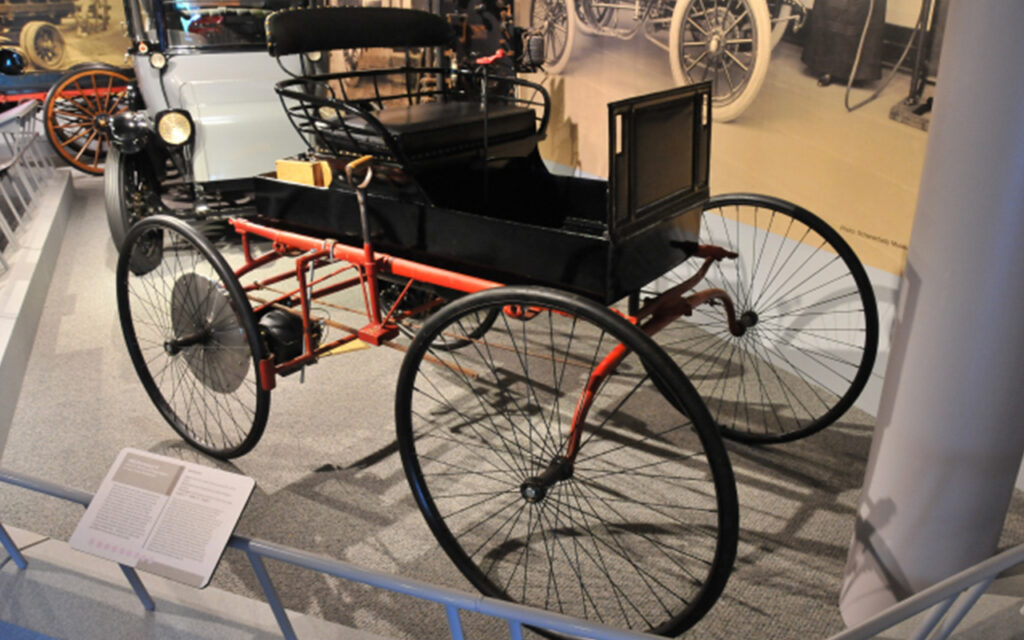The first electric car in history goes back much further than previously thought. In the 1830s, Scottish inventor Robert Anderson developed a vehicle powered by electricity. This vehicle was powered by non-rechargeable batteries. However, these vehicles were not suitable for practical use. In 1835, the American inventor Thomas Davenport designed a locomotive with an electric motor. These developments laid the foundation for electric transportation. However, these vehicles offered limited range and performance. For this reason, widespread adoption was not possible. But in any case, the history of electric vehicles is much older and deeper.
The First Practical Electric Car Electrobat
The year 1894 was an important turning point in the history of electric vehicles. It was during this year that Pedro Salom and Henry G. Morris introduced the first practical electric car, the Electrobat. Unlike the prototypes built up to that time, this vehicle was powerful and reliable enough to be used in the city. Tested on the streets of Philadelphia, the Electrobat could reach a top speed of 32 kilometers and travel about 40 kilometers on a single charge.
Electrobat used lead-acid battery technology. Although these batteries were heavy, they offered a sustainable solution for that period. The body of the vehicle was made of steel and had four wheels. The first versions were quite heavy, but later improvements made the vehicle lighter. Even the steering system and suspension mechanism were improved.
Founded in 1895, the Morris and Salom Electric Wagon and Carriage Company undertook the mass production of this vehicle. This company produced models not only for individual users but also for urban transportation services. Various versions were developed, such as taxis, postal vehicles and delivery trucks.
Electrobat demonstrated the commercial potential of electric vehicles. At the same time, they were highly preferred in cities because they were quiet and produced no exhaust gases. The foundation of many technologies used today was laid at that time. The Electrobat was not just a car, but an engineering marvel that symbolized the birth of electric transportation.


The Golden Age of Electric Vehicles
The early 1900s are considered the golden age for electric vehicles. During this period, electric cars gained immense popularity, especially in the United States. In fact, in 1900, around 28% of all cars in the US were electric. This percentage was surpassing internal combustion engine vehicles.
Electric taxis started to be used in big cities like New York, Boston and Chicago. This was because they were quiet, emitted no fumes and were very comfortable. They offered an ideal solution for short distances in the city. Women drivers also preferred electric vehicles. Because electric vehicles did not have the difficulty of starting the engine with the crank handle in gasoline vehicles.
Charging stations started to be installed in cities. There were charging units in the garages of some hotels and even in front of department stores. At that time, names such as Columbia Electric, Detroit Electric and Baker Electric stood out among electric car manufacturers. The Detroit Electric in particular was famous for its long range and luxurious interior design. Famous names like Thomas Edison and Clara Ford preferred these vehicles. But this rise also had its limitations. Battery technology was still too cumbersome and expensive. And the lack of an electricity grid in rural areas was a major obstacle. Nevertheless, this was the first time that electric vehicles were widely accepted in society. This history has a big impact on the resurgence of electric vehicles today.
The Rise of the Internal Combustion Engine
In the early twentieth century, internal combustion engines developed. In 1908, Henry Ford introduced the Model T. This vehicle became affordable through mass production. In 1912, electric cars cost $1750, while gasoline cars cost $650. Gasoline vehicles offered longer range and quick refueling. These advantages led to the decline of electric vehicles. In the 1920s, electric vehicles were almost completely withdrawn from the market.



The Rebirth of Electric Vehicles
The energy crises of the 1970s spurred interest in electric vehicles. However, technological limitations remained. In the 2000s, battery technology improved. Tesla introduced the Roadster model in 2008. This vehicle offered a range of 350 km with lithium-ion batteries. Tesla’s success encouraged other manufacturers. Today, many brands produce electric vehicles. Electric vehicles offer environmentally friendly and economical solutions. In the future, electric vehicles are expected to become even more widespread.
The first electric vehicles were developed in the 19th century. However, they could not become widespread due to technological limitations. In the 20th century, internal combustion engines came to the fore. Today, electric vehicles have regained popularity. Developing technology and environmental concerns support this transformation. Electric vehicles will continue to shape the future of transportation. What do you think about the first electric car in history?












